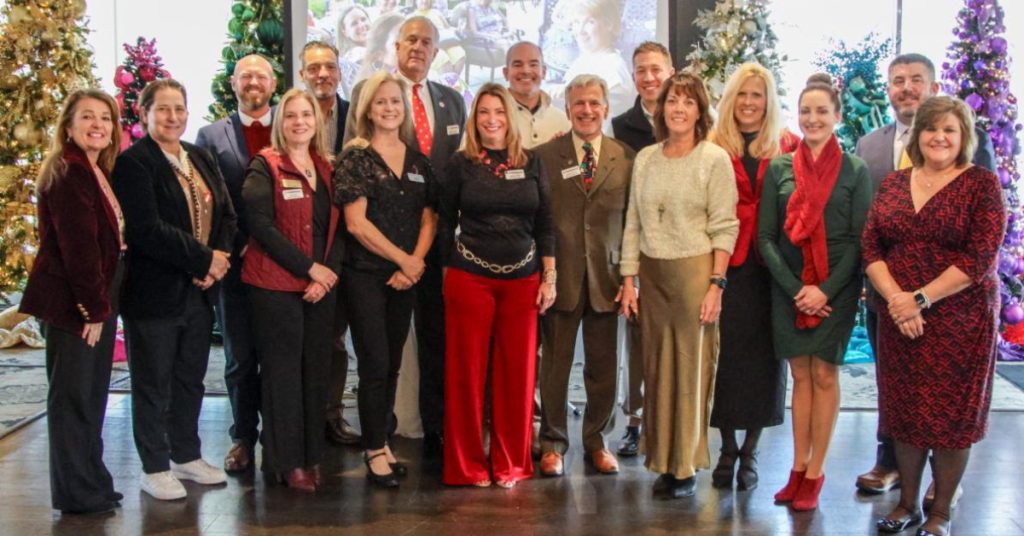South Bend area seeing economic-development success.
by Heidi Prescott Wieneke
It's not every day that a $3 billion company like Hubbell Inc. makes a long-term commitment to Indiana. But that is exactly what happened last year when the international steel box manufacturer invested more than $3 million in a new South Bend distribution center designed around its RACO brand.
Hubbell moved its warehouse operations last fall from Cook County, Ill., to a new 105,000-square-foot distribution hub located adjacent to its existing South Bend manufacturing plant. The decision lowered operating expenses, improved customer service, and made it possible for RACO to ship more than 1 million products from St. Joseph County, where the company employs more than 200 workers. “We're already looking at expanding later this summer,” says Kristen Teters, a company spokeswoman.
This is one of the recent success stories that exemplifies how St. Joseph County officials are clearing economic-development hurdles they formerly might have run into and even stumbled over. “I think our area used to have the perception that it's complicated to do business,” says Jeff Rea, president and chief executive of the St. Joseph County Chamber of Commerce. “Now we're seeing tremendous interest.”
Interest from existing companies that want to expand. Interest from prospective newcomers to the market. And interest from entrepreneurs who are interested in starting high-tech ventures in the region.
Unlike neighboring Elkhart County, the “RV Capital of the World,” St. Joseph County is not a hub of a particular sector. “That's good, because our economy is more diverse and we don't experience the downturns as significantly than a community focused on one primary industry sector,” Rea says. “But we also don't experience the upturns as significantly.”
St. Joseph County saw 19 local manufacturers invest in major business expansions in 2012. Those projects added about 700 new jobs and totaled about $100 million in capital investment in manufacturing operations, distribution center additions, call center expansions and data center business growth post-recession.
Last year did not yield as many projects or jobs–2013 fell short on the new jobs and capital investment county officials hoped to see. The county saw its unemployment rate drop to 7.5 percent in December, down from 9.6 percent in December 2012, but development activity slowed a bit. Rea says seeds were planted during discussions about potential development and redevelopment opportunities across the region, however.
About 580 new jobs were added last year in the local market, jobs that included the new RACO warehouse employees. About 100 people were hired for the new Tejas Tubular manufacturing plant in New Carlisle. The Houston-based company invested $36 million in the new plant, where it processes tubing for the oil and gas industries. Tire Rack opened its $6.5 million new call center last year in South Bend, and the county saw various smaller projects and expansions completed.
The development picture is already much different in 2014. “The Indiana Economic Development Corp. has done a great job at creating a competitive business climate within the state,” says Regina Emberton, president and chief executive of South Bend-based Michiana Partnership, a four-county economic development marketing initiative.
“In order to capitalize on the momentum of the state's environment and the general economic recovery, the communities across north-central Indiana are working hard, and as important, working together, to improve the conditions that will facilitate growth of our current companies and will put us on the radar for new business attraction,” Emberton says.
Hubbell already has announced future expansion plans because its plant has reached capacity for making steel electrical components, Rea says. “The fact that its roots go back to the 1920s, and it's a global company that could have located anywhere, says something about our county and its position for economic growth.
And he believes there are other developments like Hubbell Inc. that the county can now go get.
“It used to be a bigger game of survival, where each week you're trying not to be voted off the island. Everyone was in self-preservation mode,” says Rea, who has been a driving force behind the aggressive marketing of the region to new businesses and companies looking for areas to expand.
At the same time, Rea understands the importance of assisting existing companies in their growth plans. “I see more people today working on strategies that will help position us for the future. We want to be on radar screens that we haven't been on in the past. We need to do a better job of telling our story.”
That “story” centers on growing and expanding existing businesses, attracting new businesses, and efforts surrounding recruiting and developing the local workforce that existing or new companies need, Rea says.
“We recently had an overseas company make an offer on a building by the airport. I can't tell you a name, but they've been here a few times. It's an advanced-manufacturing company that I would expect will get a deal done,” Rea says. “Several other projects are also in the pipeline. We have been selling the region and raising the profile of our area to outside companies.”
But it's also important to grow local businesses. “It's hard to attract new attention if the companies and people you have are not growing,” Rea says. He outlined some recent announcements of large investments that could serve as catalysts for future economic development opportunities.
Lippert Components, a subsidiary of Elkhart-based Drew Industries, several weeks ago announced its expansion into a vacant former AJ Wright warehouse on South Bend's west side. The company, which makes windows, mattresses and seats for the RV and manufactured housing industries, employs nearly 5,000 people in the region. Lippert plans to hire close to 200 people by the end of 2014, with another 200 jobs projected during the next 10 years.
AM General's Mobility Ventures subsidiary this winter touted how it will be ramping up wheelchair-accessible vehicle production at the Mishawaka Hummer plant–a project that has brought hundreds of local employees back to work and will mean a future expansion of its local workforce.
“When General Motors was doing the Hummer H2, I remember they were concerned about attracting the workforce here, but they did,” Rea says. “Now we can say we made the civilian H2, the Humvee, and now the MV-1, which speaks to our ability of being home to a big plant that requires a lot of power and water. It shows we have a history of doing big projects and small projects. It helps us cast a wider net.”
Around the region, there are initiatives under way to enhance the skills of the workforce, Emberton says. Some of the initiatives include Project Lead the Way, a regional wage and benefit survey, the support of innovation through the local universities, and workforce training programs such as St. Joseph County's Supporting Manufacturers and Regional Talent (SMART) program.
In addition to workforce training, location is becoming increasingly important for expanding businesses and companies on the move. Emberton says the county's proximity to major Midwest markets via the Interstate 80-90 Commerce Corridor, Interstate 94 and other highways is highly attractive to prospective businesses eyeing the region. The South Bend Regional Airport also provides convenient access via 10 nonstop flights and ample access to connect beyond that.
“I believe there are two main factors that secured their attraction to our community–location and real estate,” Emberton says. “First, our location being easily accessible to the markets the companies serve, and second, the availability of a functional building that was ready for occupancy when they needed it.”
Rea acknowledges how St. Joseph County has a rare combination of accessibility and infrastructure as well as low-priced power and high-tech connectivity. Most communities do not have all these attributes, so it's another part of the story that needs to be told to prospective companies that are considering an area location. Communities that are nimble will be more successful, he says.
“Companies are looking for a cool, hip workplace in an area with a great cultural feeling,” he says. “Culture is critical to our future. Right now we're really good at taking orders. But we have less innovation taking place where companies are thinking up the next hot product. We had that culture back in the 1910s and 1920s with Bendix and Studebaker. We're going through a reboot to make sure our climate is right and the talent is here to make this happen again.”
Great Lakes Capital Development plans to break ground yet this spring on a $6 million multi-tenant building for high-tech and research businesses at Ignition Park, a state-certified technology park located south of downtown South Bend. Two additional buildings are already on the drawing board.
“We have several deals already in the pipeline for the first building. We feel good about our ability to get it to substantial occupancy by the end of the year. So we might be starting on the second building sooner than later. Three buildings in three years would be a pretty successful project,” says Brad Toothaker, president and chief executive of Bradley Company in South Bend, which is partnering on the Ignition Park development.
Bradley and Great Lakes Capital are also developing a $75 million mixed-use project in Mishawaka, northwest of the Indiana Toll Road. The project is expected to comprise high-end apartments, offices, retail and restaurants. Toothaker has also taken an interest in renovating dilapidated buildings in South Bend's downtown and creating new urban market-rate apartments, offices and retail space.
Great Lakes Capital recently received word that it was chosen to redevelop the former downtown South Bend LaSalle Hotel, which has sat vacant for years. The project, which is a partnership with the city of South Bend, is expected to cost more than $8 million, creating more than 60 market-rate apartment units and first-floor commercial space.
“We're lighting a corner that has been dark for a long time,” Toothaker says. “And we're seeing more lift in the market than we have in years. Two years ago, I could've told you that we were recovering slowly and still had quite a ways to go. I still think we have a ways to go before it feels normal.”
Toothaker has seen stronger action across real estate segments–residential, office, medical, commercial and retail–for the first time in years. And the huge lack of new construction in the past five to seven years is now becoming obvious with pent-up demand for certain space and quality product.
“Slowly but surely we're seeing signs of national recovery,” Toothaker adds. “We've got a great business environment and we have the right things going on as communities to continue the momentum and to see growth in St. Joseph County and our region.”




